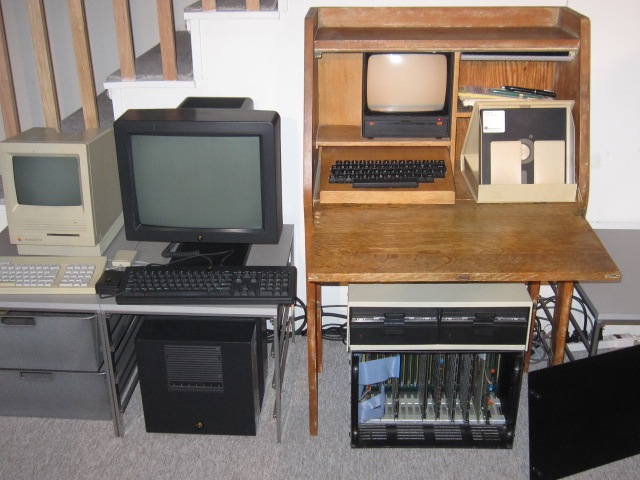
| Home | Family | Friends | Figures | Pictures | Links |
SYSTAT is a statistics and statistical graphics package I first developed in the late 1970's. Previously, I had written mainframe statistical software in the early 1970's, but when I built a Cromemco Z2 S-100 microcomputer in 1978, I entered a new world. By 1980, this machine had a megabyte of RAM, two 1.4 megabyte floppy disk drives, a pen plotter, daisy wheel and dot matrix printers, and an internal 600 baud modem. Software included WordStar, SuperCalc, BASIC, FORTRAN, LISP, and Assembler. This machine was faster and more powerful than the IBM-PC (which did not exist then), and it still runs today.
Having exclusive use of a serious computer 24 hours a day allowed me to develop robust numerical software faster than anyone could on a mainframe. We take computing power for granted today, but those who never had one of these S-100 computers cannot imagine the exuberance and smugness of those of us who did. The compilers I had on that machine were faster than mainframe compilers. The word processor was more powerful than commercial word processors such as the Wang.
Although it compiled code faster than a mainframe, the Z2 was agonizingly slow executing that code. That did not concern me, because I spent more time developing SYSTAT than using it. And it was still quicker to run a problem on the microcomputer than to queue up on the mainframe waiting for a tiny slice of CPU time.
I incorporated SYSTAT in 1983 and it grew by 1993 to over 50 dedicated and talented people. Our office, on the top floor of an Evanston building overlooking Lake Michigan, was our playground. We were especially proud of our attention to customers and our innovations in graphics and statistics. We were the first among our competitors to abandon copy protection of our software. We introduced MYSTAT, a free statistical package (not a demo) for students. We pioneered affordable and liberal university site licenses. We were the first (thanks to Mark Bjerkness) to produce a Macintosh version that had all the capabilities of our DOS and UNIX products. We and SPSS were the first statistical software companies to market full-featured Windows versions.
By 1995, I was tiring of managing a company in an increasingly commodotized market and anxious to return to research and development. That's when I called Jack Noonan, the new President of SPSS, and we met for lunch. Within an hour, I decided to sell the company to SPSS. I realized Jack was engaged in turning SPSS from a one-product statistical software company to a diversified analytic solutions provider.
SPSS offered jobs to all SYSTATers who wanted them and it invested substantially in SYSTAT development. Jack Noonan, Ed Hamburg, and Mark Battaglia created a Science division that focused SYSTAT on a market independent of SPSS. Joel York, the first head of SPSS Science, attracted new people to the SYSTAT group at SPSS.
SPSS sold SYSTAT to Cranes Software International in 2002. Cranes was located in Bangalore, India. I traveled to India in February, 2003 to meet the new people there and to give some workshops and lectures. Cranes formed a company called SYSTAT Software Inc. and continued to develop SYSTAT from Bangalore.
 |